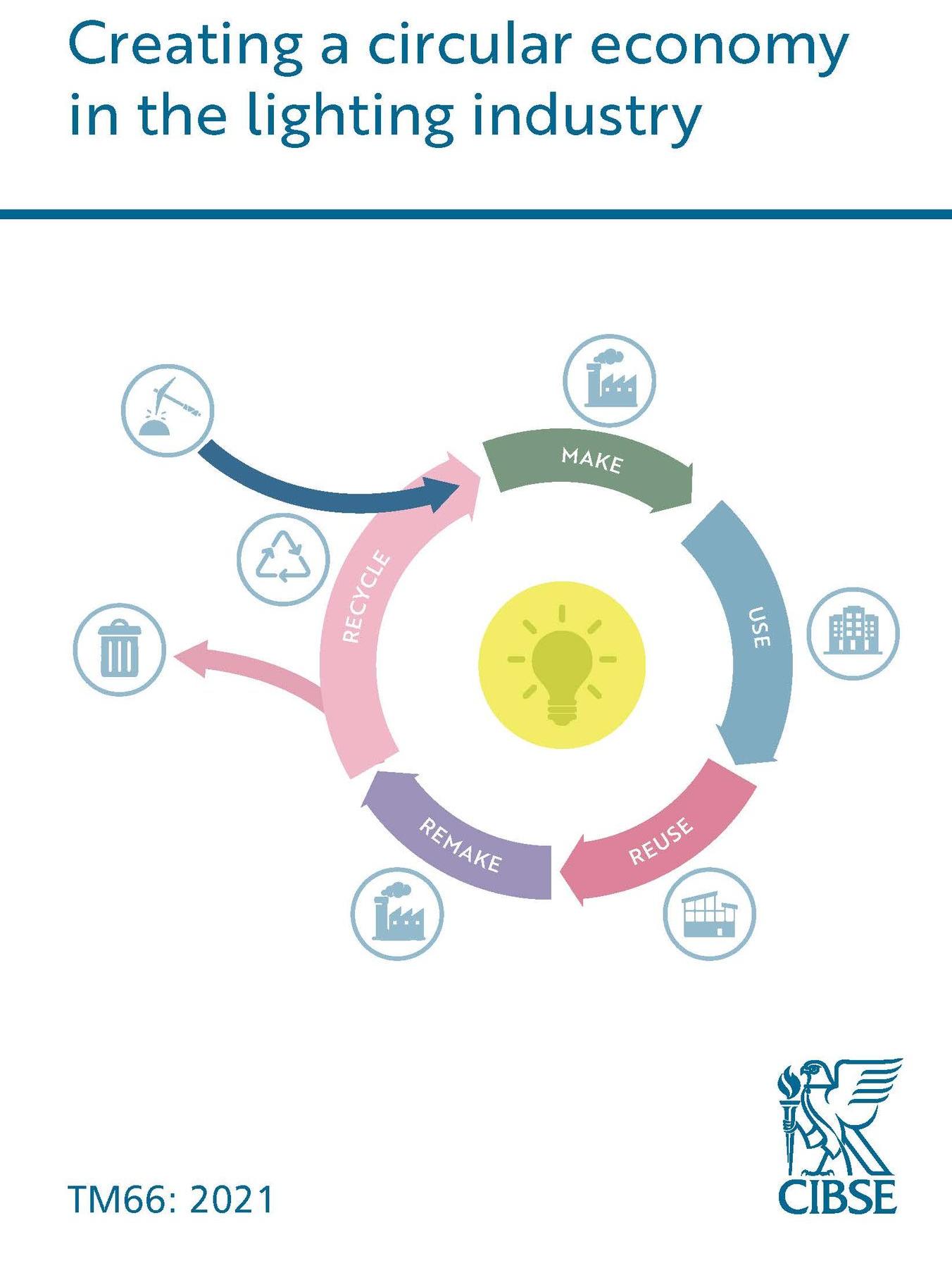
TM66
CIBSE TM66 Creating a circular economy in the lighting industry was launched in 2021 and it describes a Circular Economy’s main aims, how it can be achieved in the lighting industry and what its practice will mean to the different branches of our industry like specifiers, manufacturers, contractors and Facilities Managers.
Written by CIBSE's lighting division, the Society of Light and Lighting, TM66 includes a Circular Economy Assessment Method for Manufacturing (CEAM-Make). CEAM-Make's list of questions, the majority of which ask for back-up evidence, is split into four sections.
- Product Design: covering topics such as design for long life and repair.
- Materials: covering topics like usage of recyclable materials rather than virgin.
- Manufacturing: covering topics like additive and subtractive techniques and localisation.
- Ecosystem: covering topics like repair or upgrade services to complement circular economy design and manufacturing.
The outcome of the assessment is a single figure rating by which product comparisons can be made.
In summary
We use TM66 not only to report, but also to improve our products, thanks to the ability to trace scores back to each question and understand where improvements can be made.
With the introduction of the Assured scheme by the Lighting Industry Association in collaboration with CIBSE, which examines the products and associated TM66 scores, a layer of trustworthiness can also be added to the assessment results.
We firmly believe in the importance of remanufacturing to ensure that we move towards a more circular economy. Thanks to TM66 we are able to assess and show that our products are suitable to be repaired, remanufactured or upgraded; that our local supply chain will be able to easily provide spare parts and that our products can be easily disassembled and reassembled to carry out repair operations.